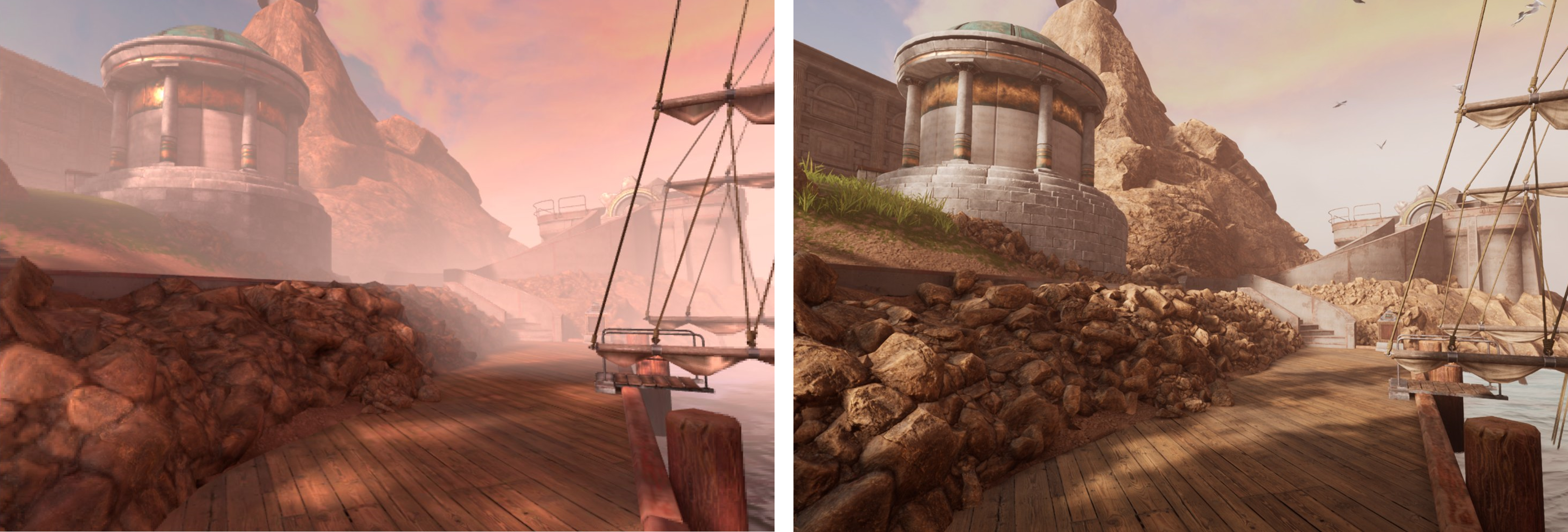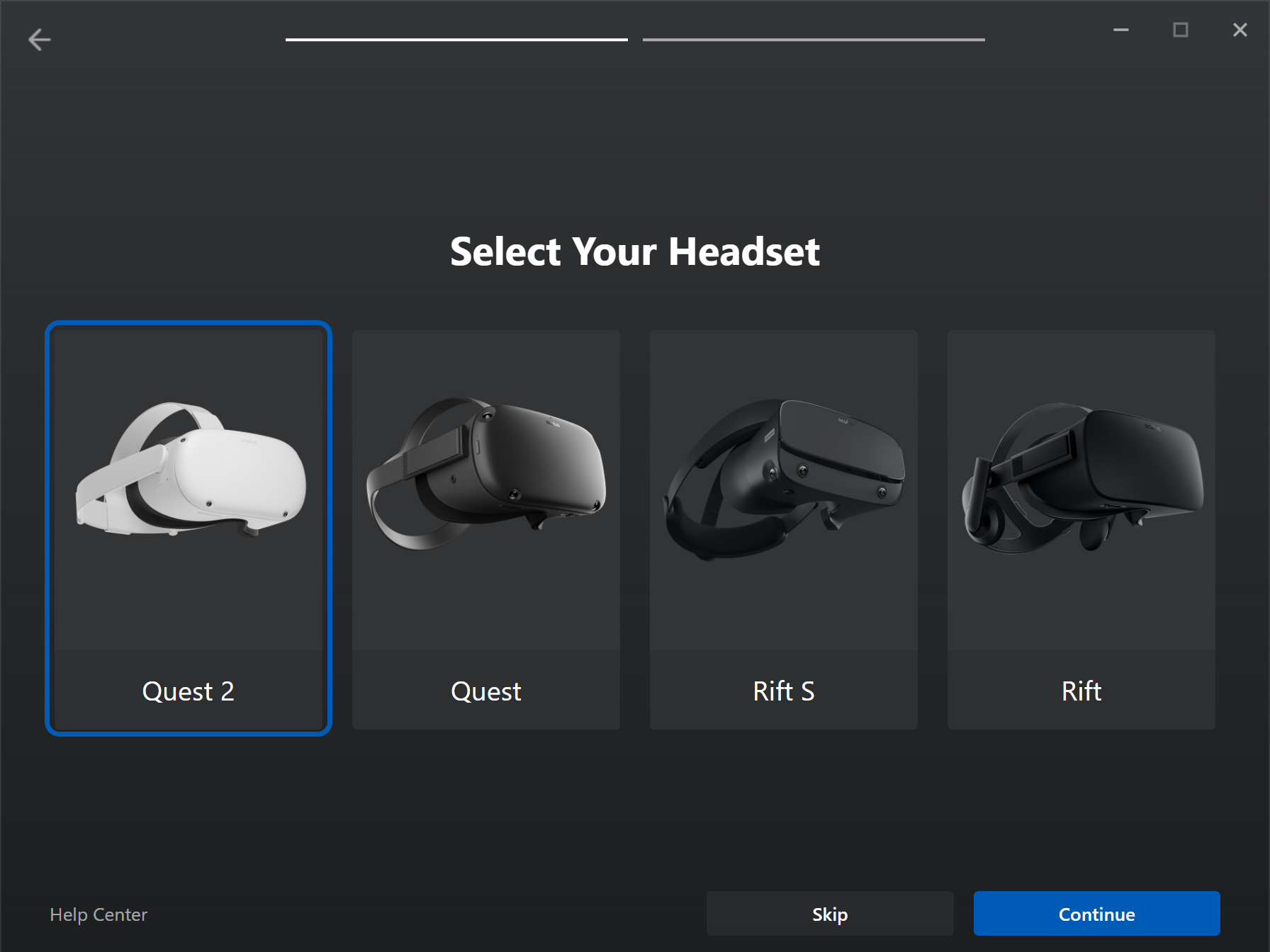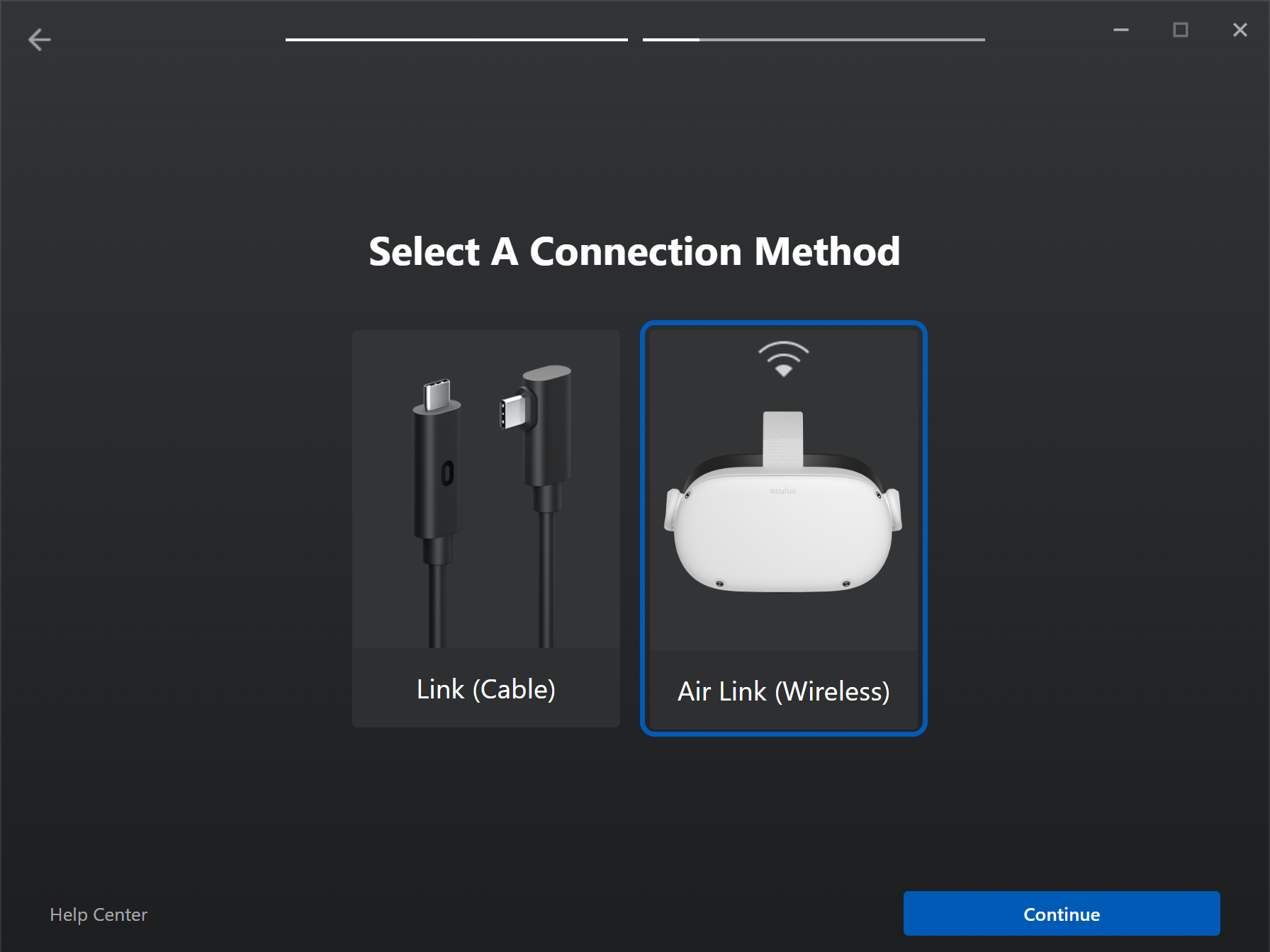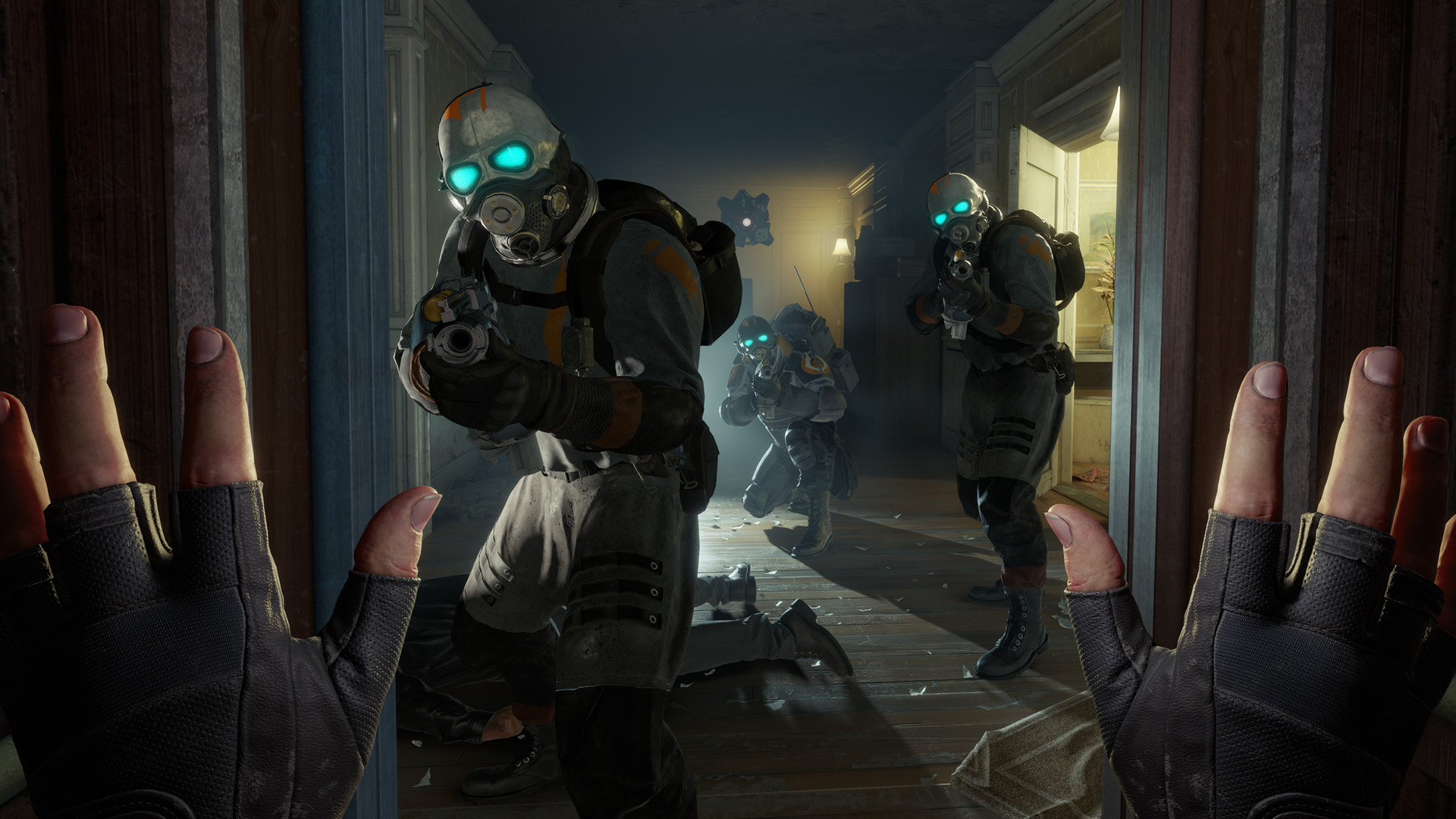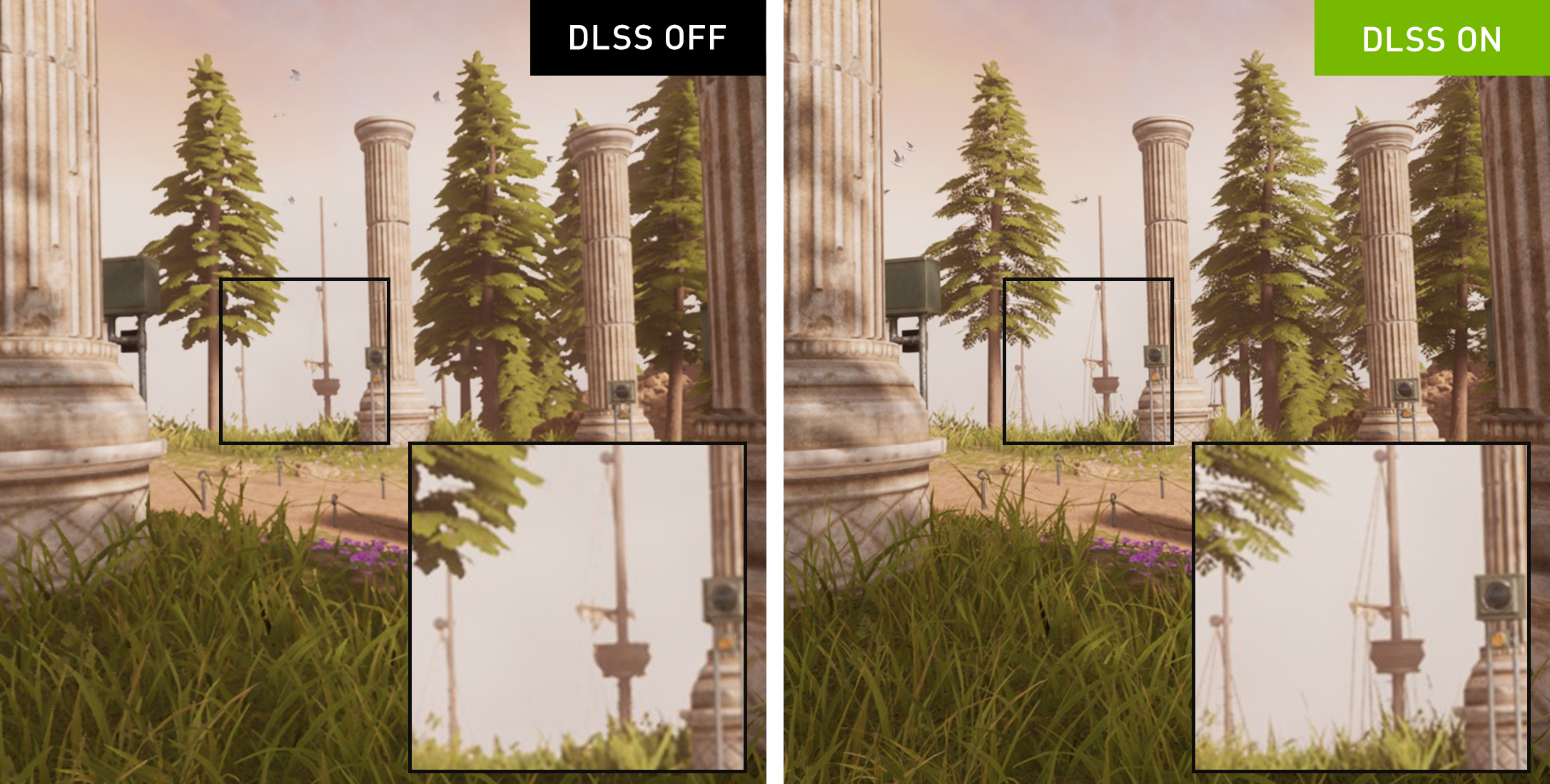Play the world's most demanding VR games, untethered, with GeForce RTX laptops and Oculus Air Link.
Virtual reality delivers some of the most immersive experiences in PC gaming. But with minimum refresh rates of 90 Hz, razor-thin latency tolerances, and headset rendering resolutions at 4K or higher, VR is one of the most demanding PC applications and requires the best GPUs.
With a GeForce RTX graphics card or laptop you can experience virtual reality the way it was intended, at the highest resolutions, with the highest graphics settings, and smooth frame rates. You’ll have access to RTX technology that’s not available on any other platform. And now, with Oculus Air Link (currently in beta), you can enjoy the fidelity of GeForce RTX-powered VR with the mobility and portability of an untethered headset.
In this article, we show you how to set up Oculus Air Link with a GeForce RTX laptop, and how to take advantage of all of the amazing developments in VR running on GeForce RTX.
Ultimate VR Mobility with GeForce RTX Laptops and Oculus Air Link
Previously, PC-powered headsets could only be used while tethered. That is, with a cable that transmits the frames from the PC to be displayed on the headset. Standalone headsets like the Oculus Quest removed this limitation, giving users more freedom of movement and portability, but at the cost of reduced visual fidelity because everything was rendered inside the headset on a mobile-class processor. Now, with Oculus Air Link, it’s possible to play games rendered by a PC GPU without the tether. And when paired with a GeForce RTX laptop, VR gamers can enjoy the ultimate platform: the fidelity of PC-powered VR, with the mobility and portability of an untethered headset.
Myst on Oculus Quest 2 in standalone mode versus Myst on Oculus Quest 2 powered by a GeForce RTX PC. The graphical enhancements made possible by the PC version can be observed in the detail on the rocks, grass, and bricks in the scene. GPU is GeForce RTX 3080.
Setting Up Oculus Air Link
To get the ultimate VR experience, you’ll need three things:
- An Oculus Quest 2 VR headset
- A low-latency gaming router
- A GeForce RTX 30 Series laptop
Based on the recommendations from Oculus and our internal testing, we suggest a 5-GHz AC or AX router, and that the laptop be connected directly to the router via ethernet. In our experience, a direct connection improves visual quality and reduces artifacts, though it generally works well even over wireless, especially with a high-quality gaming router that supports WiFi 6. We further recommend that the laptop be plugged in and that the router be located in the same room as the headset.
Once you have your hardware in place, you’ll need to do a few things:
- Download and install the latest GeForce Game Ready Driver on your laptop
- Install/update the Oculus PC app
- Enable Air Link on the PC and on the Quest headset
- Pair your headset and PC
These instructions assume that you have already set up your headset in standalone mode. If not, please go back and do that now with the instructions that came with the headset.
Installing/updating the Oculus PC App: The Oculus App makes it possible to stream games from your PC to your Oculus Quest headset. Download the Oculus App here.
After the application has finished installing, it will walk you through the setup. First, select your headset (note that Oculus Air Link is only officially supported for Oculus Quest 2).
Next, select the method that you would like to use to connect to your headset. Select Air Link.
Next, you will be prompted to put on your headset. Read this next section before you do so, as once you put the headset on it becomes difficult to see your computer screen.
When you put on your headset you will find yourself in your Oculus Home Environment. You should see your Oculus menu. If not, press the Oculus button, which is the concave button with the Oculus logo on the right controller below the thumbstick.
Bring up the settings menu by first launching the quick settings menu, and then clicking the gear icon.
From the settings menu, go to the Experimental Features section. Click the toggle for Air Link.
Now Air Link should appear as an option in your quick settings menu. Click on Air Link to connect to your PC. You will be asked to confirm the pairing by verifying that the numeric code you are presented on your PC matches a numeric code in your headset.
Once your headset and PC are paired, click on Air Link from the quick settings menu to launch Air Link. This will launch the Oculus App on your desktop (if it’s not already open), and in your headset will bring you to the Oculus PC home environment and the menu that incorporates the Oculus PC store and various other capabilities. From here you can purchase and launch Oculus PC content, or you can launch VR games from Steam.
To launch a game from Steam, click on the desktop icon from the Oculus control bar, which will bring up your PC desktop from within VR. From here you can launch the Steam desktop app, navigate to your library, and then launch the game. Launching a Steam game in VR mode will also launch the SteamVR runtime, which acts as a bridge between your headset and the SteamVR API.
If you’ve previously run the game, the Oculus PC environment provides a quick link to it on the left side of the launcher.
Oculus Air Link enables you to play PC VR titles like Half-Life:Alyx, untethered on the Oculus Quest 2
Half-Life: Alyx © Valve Corporation. All rights reserved.
Play at the Highest Resolutions and Quality Levels with NVIDIA DLSS
In addition to more graphics horsepower, NVIDIA has developed new technologies to further increase the performance and graphical fidelity of gaming experiences.
There are three interrelated rendering challenges that impact the immersiveness of VR: frame rate, render resolution, and graphics settings. If the frame rate drops below the refresh rate of the VR headset it results in reprojection artifacts, which can appear as hitching or “swimming” of the scene. If the application render resolution is too low, the scene appears blurry, as if viewed through a fogged window. And if the graphics settings are too low, you just don’t get to experience the full depth of the content as the developer intended.
For GeForce RTX users, there’s a technology that allows VR gamers to enjoy faster performance and better image quality: NVIDIA DLSS. This AI-powered technology is made possible by the Tensor Cores found exclusively on GeForce RTX GPUs. In VR, it enables a game to be rendered at a lower resolution, boosting framerates, while producing visual quality and clarity that appears as though it was rendered at a much higher resolution.
This gives the user more freedom to crank up the graphics settings while still maintaining 90 FPS, for smooth VR gameplay. For VR, NVIDIA DLSS delivers a clearer image, with better in-game settings, all while avoiding reprojection artifacts. Eight VR titles, including No Man’s Sky, Myst, and Legendary Tales join the growing list of games and applications that have adopted NVIDIA DLSS.
Myst VR with DLSS Off (left) versus DLSS On (right). In order to maintain 90 FPS (and thus avoid reprojection artifacts and dropped frames) with DLSS Off the render resolution is set to 3248 x 1648 (1632 x 1648 per eye), resulting in significant loss of detail (note the foliage and the rigging on the ship). With DLSS Quality, a render resolution of 4864 x 2448 can be maintained. GPU is GeForce RTX 3080
No Man’s Sky with DLSS Off (left) versus DLSS On (right). In order to maintain 90 FPS at the Ultra graphics preset, with DLSS Off the render resolution is set to 2432 x 1216, resulting in significant loss of detail. With DLSS Performance, a render resolution of 3712 x 1872 can be maintained. GPU is GeForce RTX 3070.
Real-Time Ray Tracing Comes To VR
Real-time ray tracing adds a level of realism to games that cannot be achieved by any other method. By simulating the physics of light, ray tracing produces realistic reflections and shadows that behave the way they would in the real world.
NVIDIA RTX GPUs include RT Cores, specifically designed for accelerating ray tracing operations. And now, combined with NVIDIA DLSS, RT Cores make it possible to run ray tracing in real-time for VR applications, as in Helios VR and Wrench VR.
Wrench VR uses RT and DLSS to enable realistic shadows and reflections
The Ultimate Portable VR Experience
With GeForce RTX laptops and Oculus Air Link, gamers can now enjoy the ultimate, portable VR experience, with high resolutions, fast frame rates, cutting edge graphics tech, and complete mobility. Learn more about VR on GeForce here. And find the right GeForce RTX laptops to upgrade your VR gaming experience here.
